Related Research Articles

Marriage, also called matrimony or wedlock, is a culturally and often legally recognised union between people called spouses. It establishes rights and obligations between them, as well as between them and their children, and between them and their in-laws. It is nearly a cultural universal, but the definition of marriage varies between cultures and religions, and over time. Typically, it is an institution in which interpersonal relationships, usually sexual, are acknowledged or sanctioned. In some cultures, marriage is recommended or considered to be compulsory before pursuing sexual activity. A marriage ceremony is called a wedding, while a private marriage is sometimes called an elopement.
Marriageable age, marriage age, or the age of marriage is the general age, a legal age or the minimum age marriage. Age and other prerequisites to marriage vary between jurisdictions, but in the vast majority of jurisdictions, the marriage age as a right is set at the age of majority. Nevertheless, most jurisdictions allow marriage at a younger age with parental or judicial approval, especially if the female is pregnant. Among most indigenous cultures, people marry at fifteen, the age of sexual maturity for both the male and the female. In industrialized cultures, the age of marriage is most commonly 18 years old, but there are variations, and the marriageable age should not be confused with the age of majority or the age of consent, though they may be the same.
Child marriage is a marriage or domestic partnership, formal or informal, between a child and an adult, or between a child and another child.
A shotgun wedding is a wedding arranged in response to pregnancy resulting from premarital sex. The phrase is a primarily U.S. colloquialism, termed as such based on a stereotypical scenario in which the father of the pregnant bride-to-be threatens the reluctant groom with a shotgun in order to ensure that he follows through with the wedding.
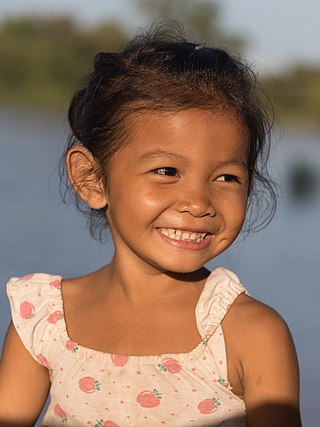
A girl is a young female human, usually a child or an adolescent. While the term girl has other meanings, including young woman, daughter or girlfriend regardless of age, the first meaning is the most common one.

Bride kidnapping, also known as marriage by abduction or marriage by capture, is a practice in which a man abducts and rapes the woman he wishes to marry.
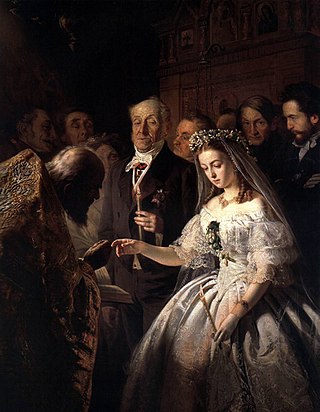
Forced marriage is a marriage in which one or more of the parties is married without their consent or against their will. A marriage can also become a forced marriage even if both parties enter with full consent if one or both are later forced to stay in the marriage against their will.
The legal age of consent for sexual activity varies by jurisdiction across Asia. The specific activity engaged in or the gender of participants can also be relevant factors. Below is a discussion of the various laws dealing with this subject. The highlighted age refers to an age at or above which an individual can engage in unfettered sexual relations with another who is also at or above that age. Other variables, such as homosexual relations or close in age exceptions, may exist, and are noted when relevant.

The age of consent in Africa for sexual activity varies by jurisdiction across the continent, codified in laws which may also stipulate the specific activities that are permitted or the gender of participants for different ages. Other variables may exist, such as close-in-age exemptions.
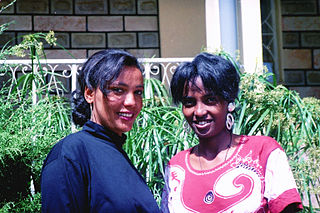
There have been several studies concerning women in Ethiopia. Historically, elite and powerful women in Ethiopia have been visible as administrators and warriors. This never translated into any benefit to improve the rights of women, but it had meant that women could inherit and own property and act as advisors on important communal and tribal matters. As late as the first part of the 20th century, Queen Menen, consort of Emperor Haile Selassie I, had a decisive role in running the Ethiopian Empire. Workit and Mestayit regents to their minor sons have been held responsible for their provinces. They owed their rights to landed property because of a special type of land tenure that expected tenants to serve as militia to overlords, irrespective of gender. In 1896, Empress Tayetu Betul, wife of Emperor Menelik II, actively advised the government and participated in defending the country from Italian invasion. Prominent and other landowning women fought against the second invasion in 1935–41. With the assistance of European advisors, women in the ensuing period were kept out of the army and politics, even as advisors. Instead, they were restricted to family and household work of raising children and cooking. With a steady increase in female representation in education, they have started to undertake nursing, teaching, and other similarly supportive roles. Over the 2018–2019 period, their gradual participation in state politics has been increasing at a steady pace.

Teenage marriage is the union of two adolescents between the ages of 13 and 19. Many factors contribute to teenage marriage, such as love, teenage pregnancy, religion, security, wealth, family, peer pressure, arranged marriage, economic and/or political reasons, social advancement, and cultural reasons. Studies have shown that teenage married couples are often disadvantaged, may come from broken homes, may have little education, and work in low-status jobs and lead a poor economic life in comparison with those that marry after adolescence.
According to UNICEF, child marriage is the "formal marriage or informal union before age 18", and it affects more girls than boys. In Afghanistan, up to 57% of girls are married before they are 19. The most common ages for girls to get married are 15 and 16. Factors such as gender dynamics, family structure, cultural, political, and economic perceptions/ideologies all play a role in determining if a girl is married at a young age.

Child marriage in India, according to the Indian law, is a marriage where the woman and man both are younger than 21 years of age respectively. Most child marriages involve women, many of whom are poor socio-economic conditions.
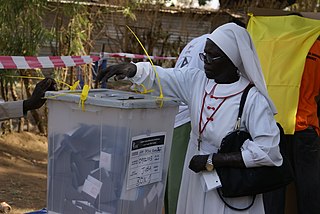
Women in South Sudan are women who live in and are from South Sudan. Since the Independence of South Sudan on 9 July 2011, these women have gained more power but still face issues of inequality. Many women in this area do not have adequate access to health resources and education. While these women often face inequality, there has been progress since South Sudan's official declaration of independence. In recent years, this inequality has gained national attention and people have become more interested in the issue of child marriage that this area faces. Along with this, there has started to be a focus on the very high level of maternal mortality in South Sudan. With a maternal mortality rate of 789 deaths per 100,000 live births, South Sudan has one of the highest rates in the world.
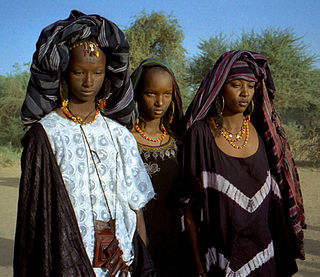
Women in Niger are women that are from or live in the West African country of Niger. These women belong to a population in which 98% are practitioners of Islam. Laws adopted by the government of Niger to protect the rights of Nigerien women are most often based on Muslim beliefs.

Although illegal, child marriage in Turkey remains prevalent, especially among less educated families. It is a controversial political issue, and a topic of contention between liberal and conservative segments of society.

In the United States, a child marriage is a marriage in which at least one party is under 18 years of age—or the age of majority.
Family planning in Bangladesh is carried out by government agencies and supported by non-government organisations. The Directorate General of Family Planning is the government agency responsible for family planning in Bangladesh. Marie Stopes Bangladesh is an international NGO that provides family planning services in Bangladesh.

Child marriage is a marriage or union between a child under the age of 18 to another child or to an adult. Child marriage is common in a multitude of African countries. In South Sudan, child marriage is a growing epidemic. Child marriage in South Sudan is driven by socioeconomic factors such as poverty and gender inequality. Current figures state that South Sudan is one of the leading countries in the world when it comes to child marriage. Child marriage has negative consequences for children, including health problems and lower education rates for South Sudanese girls. Many initiatives have been taken to combat child marriage in South Sudan, but the presence of societal norms and instability continues to drive its presence in the nation.
Child Marriage in Mali is an ongoing practice. Mali has the 5th highest prevalence of female child marriages globally. A study conducted by the Institut National de la Statistique in 2018 found that 15% of 15-19 year old girls were married by the age of 15, a reduction compared to the 18% of women aged 20-49 who had been married by that age. The same study also shows that while 53% of women aged 20-49 were married before the age of 18, the same was true for only 3% of men, with no recorded marriages of boys aged 15 or younger.
References
- ↑ "Child marriage around the world: ZIMBABWE", Girls Not Brides
- ↑ "Multiple Indicator Cluster Survey (MICS) 2019 Survey Findings Report" (PDF). Zimbabwe National Statistics Agency. November 2019. p. 17. Archived (PDF) from the original on 2021-01-24. Retrieved 11 October 2021.
- ↑ Chingono, Nyasha (11 October 2021). "Death of a 15-year-old girl while giving birth exposes dark practice of child marriage in Zimbabwe". CNN. Archived from the original on 2021-10-12. Retrieved 11 October 2021.
- ↑ "ENDING CHILD MARRIAGE IN ZIMBABWE: GAPS AND OPPORTUNITIES IN LEGAL AND REGULATORY FRAMEWORKS" (PDF), Because I am a Girl Foundation, Girls Not Brides, 2016[ permanent dead link ]